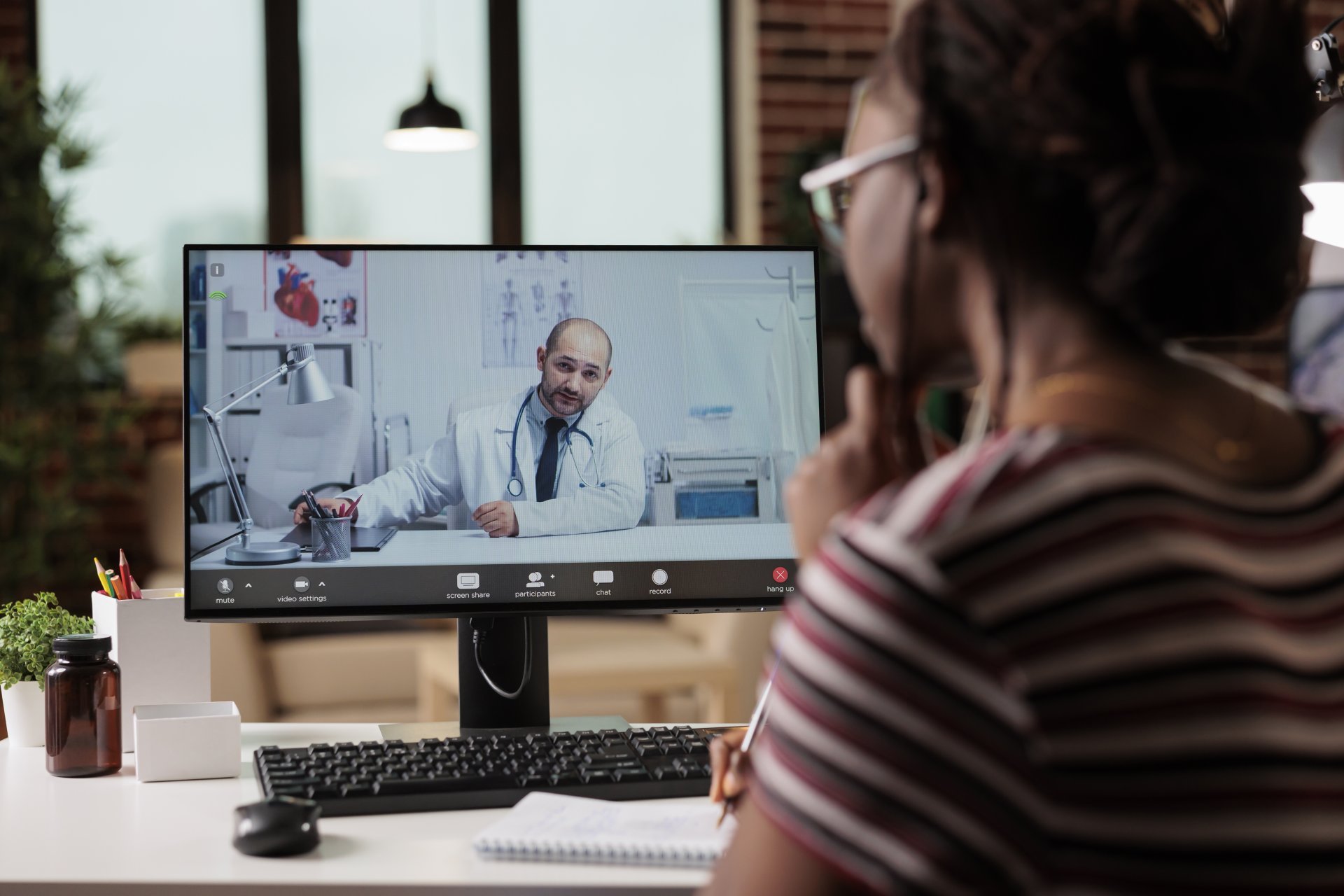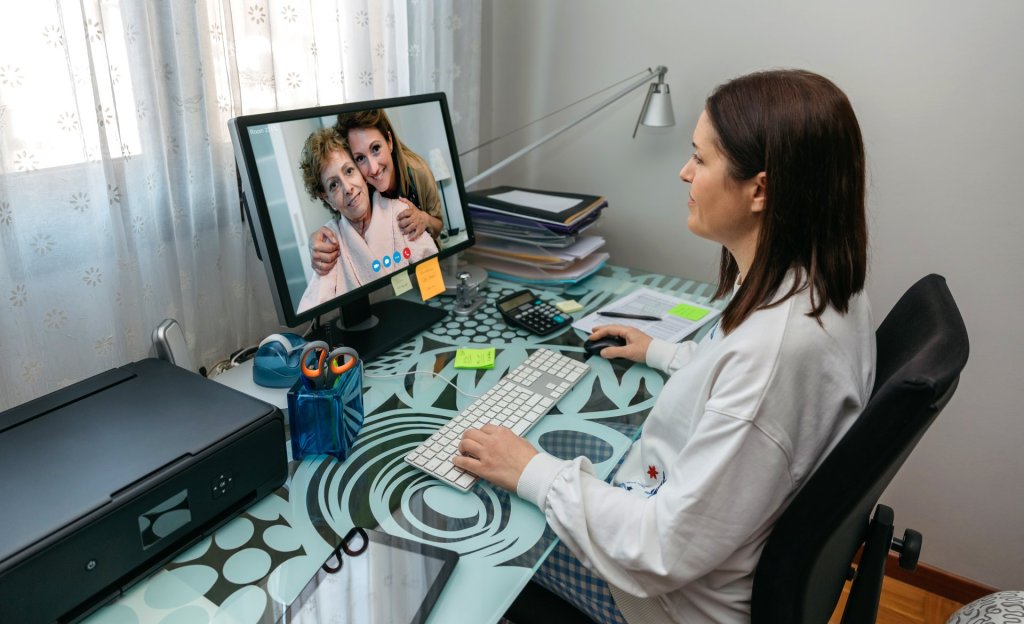Rapid improvements in technology have made online healthcare services a possibility. Until recently, many people assumed that telehealth was a gimmick that wouldn’t offer patients what they needed, but the opposite has become clear. Telehealth is a crucial part of the modern healthcare system.
Telehealth and virtual care offer opportunities for patients to receive the care they need. They also allow for more collaboration among those in the healthcare industry, and they open up more job opportunities across the country.
What is telehealth and virtual care?
Telehealth is the use of digital technology that allows providers to conduct healthcare visits without having patients come to their offices. Providers use video calling services and instant messaging to interface with patients in real time as they would during an office visit.
Virtual care refers to the comprehensive approach of using telehealth for sessions while also including virtual check-ins, virtual monitoring of conditions and vital signals, and answering concerns from patients remotely. This kind of care can even provide virtual nurse triage services.
Telehealth and virtual care can be effective in all manner of settings, including outpatient services, primary care, community health, and more.
Virtual care is appropriate for the majority of appointment types. Screening, diagnosing, treatment planning, and follow-ups can all occur online. Other types of services that virtual care helps with are discussing scans and test results and providing repeat prescriptions.
It is an important tool for counseling as well, allowing patients to speak with their therapists in the comfort of their own homes or in emergency situations.
Patients can benefit from a few different types of telemedicine. Real-time interactive mode is an option that allows patients and providers to communicate through private and direct video conferencing, messaging, or audio connection.
Store and forward mode is another kind of telehealth option. It involves storing medical data in a cloud space and then sending it to the telehealth provider. It’s a common option in rural areas where providers may be consulting with specialists in other areas.
Remote monitoring makes it possible for providers to check and record vital signs and more. It’s often used for seniors, especially to monitor for falls.
Mobile health relies on apps and mobile devices. A number of health-based apps can check everything from daily water intake to blood sugar levels, and many can integrate with patient records, allowing providers access to the information.

Benefits of telehealth and virtual care for providers and patients
Most providers of healthcare services, as well as their patients, can benefit from the various types of virtual care.
Expands patient base
Being able to offer telehealth and virtual care services makes it easier for healthcare providers to reach out to patient bases outside of their local area. This helps patients, too, because it can address disparities in healthcare.
People who don’t have the ability to get to appointments or who can’t afford to travel to see a specialist can benefit from telehealth services. This can be essential in rural areas, for example, where mental health providers and specialists are few and far between.
Patients who are dependent on public transportation to reach their provider or who don’t have reliable childcare are more likely to miss appointments, but that can also be resolved through telehealth services.
Fosters collaboration
Telehealth and virtual care make it easier to collaborate with other medical professionals. Combining expertise can increase diagnostic speed, helping patients get faster and more effective treatments. Physicians can invite colleagues to virtual visits, allowing patients to get second opinions quickly.
Offers more effective follow-ups
Virtual care helps make patient follow-ups easier. This can include everything from overviews of consultations to monitoring of vital signs. For patients, regular engagement from the healthcare provider can result in better patient outcomes. Additionally, it’s much easier to have this engagement without having to set up an in-person appointment each time.
Improves specialty care
Telehealth can make specialty care faster. If a patient requires specialty referrals, primary care doctors worry that help won’t be available quickly enough if in-person appointments are the only option. By relying on telehealth, primary care providers can consult virtually with specialists while the patient is in the room with them.
This allows patients to leave the office with a diagnosis and a treatment plan in place, improving patient outcomes and reducing delays.
Increases patient adherence
Patients who have easier access to specialists and generalists adhere to their treatments better. This improves patient outcomes.
When it comes to mental health, telehealth services have shown the ability to help with depression and anxiety symptoms, keeping patients focused on their treatments and offering the support they need to continue following the provider’s guidance.
Helps management of chronic conditions
Telehealth helps patients who need ongoing care, as well as the providers who offer that care. Instead of requiring patients to attend in person, which can put a burden on their health, management can be done virtually.
Increases patient flexibility
Patients often have to deal with a variety of personal barriers when making appointments. These include their work schedules, childcare needs, travel time, and more. Telehealth helps both patients and providers better manage their appointments.
Improves patient outcomes
By helping with treatment adherence and the management of chronic conditions, telehealth and virtual care can improve patient outcomes. This technology offers the chance for patients to receive information on their treatments and to address concerns more easily.

Job opportunities in telehealth and virtual care
Telehealth and virtual care opportunities give you a chance to help patients more effectively. They can also make your job easier and more rewarding. With better patient outcomes and more flexibility for everyone involved, these options are an important part of the future of healthcare.
Prolink offers help in finding the right job to suit your needs and career goals. Local jobs can be even more convenient when you choose remote telehealth options that allow you to do more with your time and training. Speak with a Prolink recruiter today to learn more about telehealth and virtual care.









